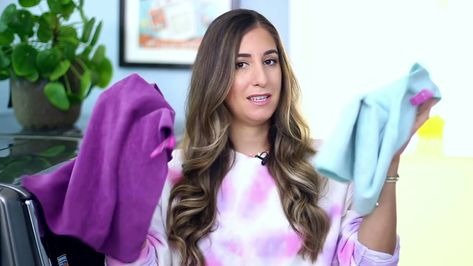
Washing towels with clothes is a life-saver. You don’t have to spend so much time and energy doing separate loads. Just dump them in the machine together and wash them!
But many experts would tell you otherwise. According to them, washing towels with clothes can cause stretch and discoloration. The overall fabric quality will be ruined.
They’re not wrong. You can actually destroy your precious clothes if you aren’t careful enough.
In this article, we’ll unravel some amazing tips on washing towels with clothes. We’ll also discuss the right method to wash towels and much more. So, without further ado, let’s dive in!
Table of Contents
Can You Wash Towels with Clothes?
Yes, you can wash towels with clothes. There are no rules in the laundry world. As long as something is fabric, it can be washed together in the washing machine.
But, since many people practice the dump-and-wash method, doing so isn’t advisable. Washing heavy towels with light clothes can stretch the fabric and distort the garment shape. Different colors can also bleed and discolor your expensive outfits.
That said, if you’re careful and wash them the right way, there’s no reason you shouldn’t wash towels and clothes together!
9 Tips on Washing Towels with Clothes
Washing towels with clothes isn’t rocket science, but just a matter of some tips. These include:
1. Sort the Laundry
There are three broad categories of fabric; heavy, medium, and light. Here are a few examples of each:
| Heavy | Medium | Light |
| Denim
Suede Wool Canvas Flannel Tweed |
Satin
Polyester Jersey Poplin Taffeta |
Chiffon
Organza Mesh Linen Silk Cotton Felt |
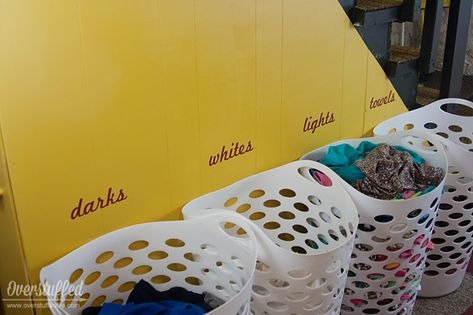
The general rule is to first sort your laundry according to fabric weights. Since towels are considered to be heavy, put them in the load with jeans, jackets, hoodies, and other heavyweight clothes.
This will ensure there is little to no stretch when the machine starts churning the clothes. Your precious garments will stay safe!
2. Separate Different Colors
The next thing to do is sort the laundry based on colors. Now, this doesn’t mean you should separate the clothes into different color piles. It will only increase the number of washing cycles and will waste a lot of water too.
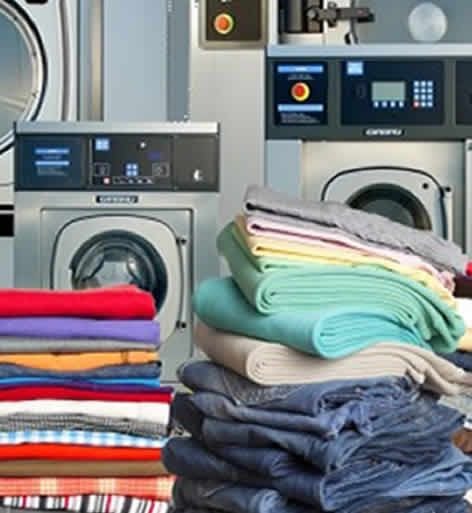
Instead, sort the dirty clothes into loads of light and dark shades. This will prevent color bleeding and discoloration. If you’ve too few clothes that cannot be separated into different color piles, first dip the dark-colored items into a tub of water to check for bleeding.
Remove the bleeding clothes from the load. You’ll have to wash them individually to avoid staining on the light-colored clothes.
3. Measure Out the Detergent
Detergent is a cleaning agent that gets rid of the impurities and dirt from the clothes. So, it might make sense to put in more detergent for better cleaning. But that’s not the case!
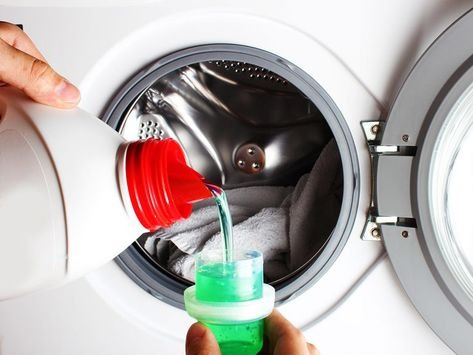
Too much detergent can leave behind residue that can become a source of odor and bacteria growth. It can also lead to suds, which prevent the clothes from rubbing against each other.
As a result, the washed clothes are, in reality, dirtier than the unwashed ones. They also become itchy, stiff, and uncomfortable. You can’t wear them without constantly scratching your body.
So, always measure the detergent before washing anything. The rule is to use 1 to 2 tablespoons of liquid detergent for a regular load. If you’re using powder detergent, use about 1/4th cup.
4. Try Warm Water
Most of us don’t really care about the water temperature when washing clothes. However, if you read the labels on any cloth tag, you’ll see that there’s always a temperature recommendation.
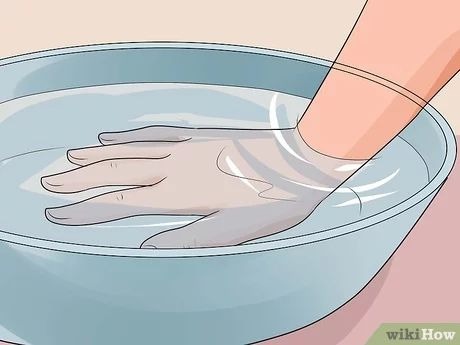
Following this guideline can actually help you maintain the cloth’s quality. It can also eliminate germs and ensure hygiene. So, what temperature is suitable for washing towels and clothes together?
Usually, towels are washed at high temperatures – especially if they have been shared or heavily soiled. Meanwhile, most clothes require a low to medium temperature. What does that mean?
Unless the towels are shared/heavily soiled, wash them with clothes in warm water. It should be neither hot nor cold but lukewarm.
5. Don’t Overload the Washing Machine
When washing towels with clothes, the maximum load capacity of the machine is easily exceeded. This is a big no-no!
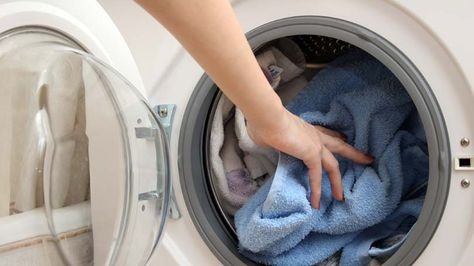
Overloading the washing machine puts too much pressure on the motor. It is unable to rotate the load as effectively and quickly as its normal capacity. As a result, the clothes aren’t washed properly.
Plus, the motor becomes damaged with time. If you want to avoid the loss of a machine, it’s better to take care of the machine’s capacity.
6. Use Mesh Bags
Although it isn’t recommended to wash delicate clothes with towels, you can still manage to do it using a small hack. Use mesh bags!
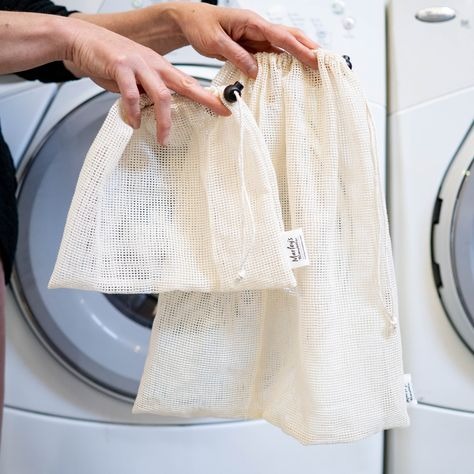
A mesh bag has fine small holes in its surface. This allows water to move inside freely and wash the clothes inside. It’s also heat-resistant, which makes it ideal for use with towels.
Just put in your delicate clothes like undergarments, and wash them in mixed loads without worries!
7. Avoid Fabric Softener
Fabric softeners are excellent for keeping your clothes soft and comfortable to wear. But never use them when washing towels.
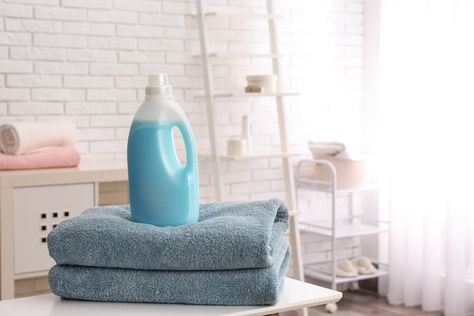
It’s primarily because a softener causes the towel fabrics to lose their absorption quality. They become flat and typically useless. It won’t dry your body or hair after showers.
Softener also causes the clothes to become susceptible to static cling. This is especially annoying in autumn and winter.
8. Remove Excess Water Before Drying
Heavy clothes need to dry longer than lightweight ones. So, if you put all of them together (without squeezing out the excess water), you’ll end up with unevenly dried clothes. Also, overdrying causes your clothes to shrink and distort.
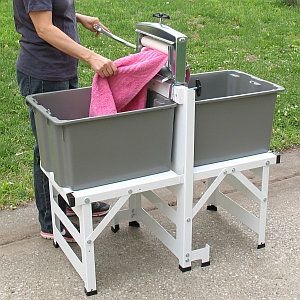
It’s why you should always squeeze the towels and other heavy clothes before drying them together. Or a better option would be to dry them separately.
9. Monitor the Drying Cycle
Most washing machines have sensors, and if you haven’t removed the excess water properly, chances are that they will detect the moisture content of towels. This means longer drying times than needed for lightweight clothes.
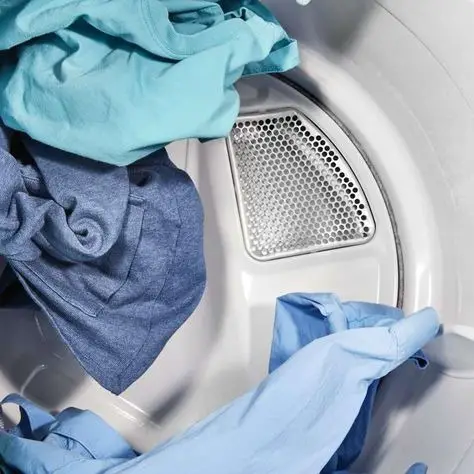
To avoid this, monitor the drying cycle and ensure it doesn’t exceed the recommended time. It’s suggested to dry your washed towels and clothes for 30 to 45 minutes.
If you feel like this time range hasn’t dried the towels properly, separate the light clothes from the towels and run another dryer cycle. Or just hang everything outside under the sun to air-dry.
How Do You Wash Towels with Clothes?
Now that we’ve discussed tips to maintain the quality of towels and clothes when washing together. Let’s look at the step-by-step process of washing them!
1. Sort out the Laundry
The first step is to sort out the laundry based on weight and color. You’ll have four piles in total – heavyweight, lightweight, light shades, and dark shades. Wash all four loads in one day if you’ve got the time, or go by priority.
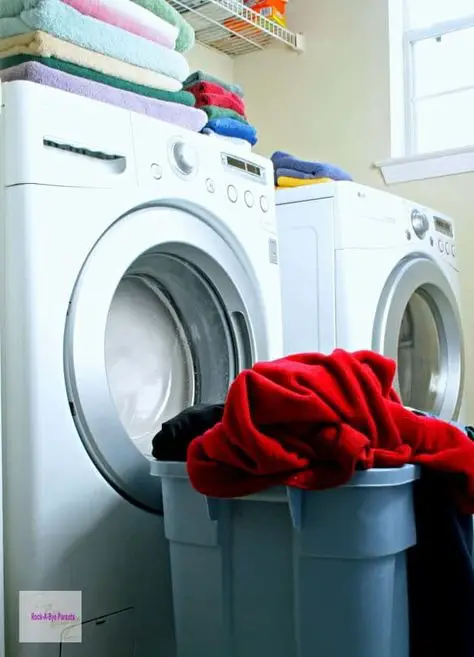
Some people sort the laundry further by separating the delicate clothes. But you can simply use a mesh bag and wash them with towels.
2. Fill the Washing Machine with Water
Every washing machine has a different load capacity. Most standard machines can wash 12 pounds of laundry at once, whereas front-loading ones can easily handle between 15 to 18 pounds. Put in clothes according to what your machine can handle.
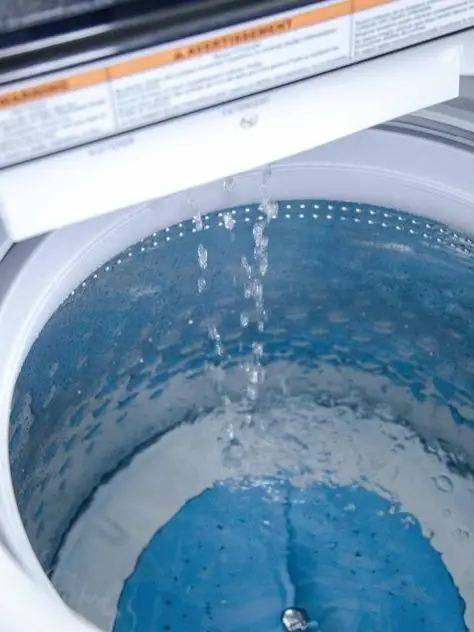
Once done, fill in the water until it submerges the laundry completely. There should be enough water for the clothes to move around easily, so be a little generous. Otherwise, the pressure of spinning might damage the rotator.
Also, make sure you fill in the right temperature water. Hot water is best to get rid of germs and heavy stains. However, for mixed clothes and towels, moderate temperature (warm water) will be suitable.
3. Measure Detergent
Next, measure the detergent quantity and put it in the washing machine. There are laundry measuring cups easily available in the market. So, do not add estimated amounts.
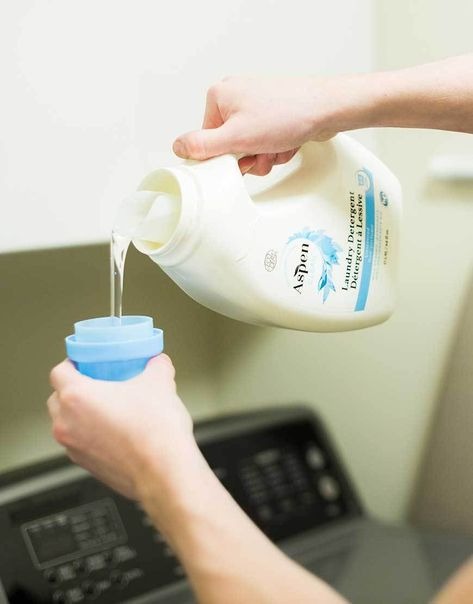
For a single load, use 1 to 2-tbsps of liquid detergent or ¼-cup of powder detergent. You can double the amount of the detergent that is of low concentration.
If the clothes are all-white, you can also add a little amount of non-chlorine bleach or fabric brighteners like sodium percarbonate. This will keep them from yellowing and fading. For colored clothes, you can use color-safe bleach to give a brightening effect.
4. Use White Vinegar and Baking Soda.
Since fabric softeners are a big no-no in mixed towels and clothes batches, we recommend you add a quarter cup of white vinegar into the washing machine. It’s a natural alternative with the same performance quality as the commercial-grade softener.
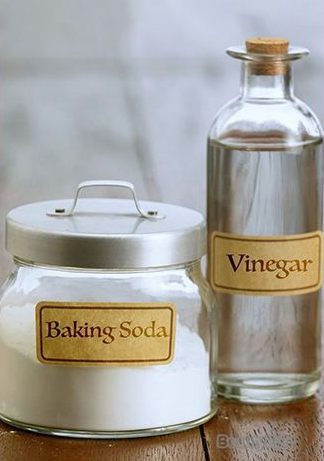
However, it doesn’t flatten the towels and reduces their absorption quality. Your towels and clothes will become soft without any negative consequences!
If your laundry has developed an unpleasant odor, also consider adding ½-cup of baking soda to the machine. This absorbs all the smell and makes your clothes fresh. But ensure that the laundry is rewashed with detergent after being washed with baking soda.
5. Dry the Load
Once everything is clean, pick each item from the washed laundry and squeeze out the excess water. Squeeze the heavyweight clothes harder than lightweight ones. Then, put all the clothes and towels in the dryer.
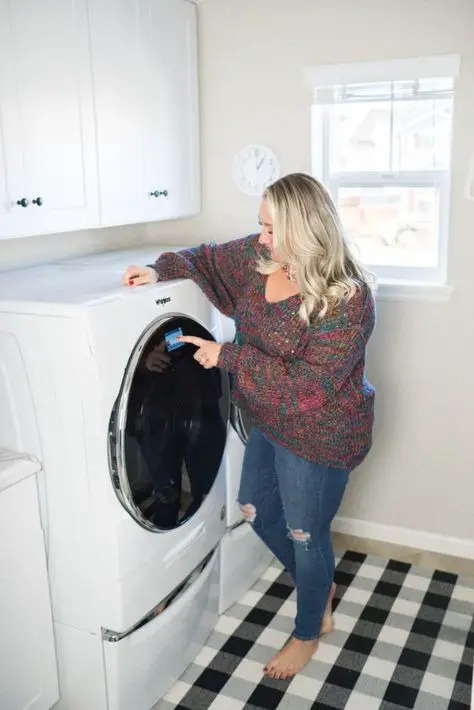
You can add wool balls at this stage. These work as dryer sheets and fluff up the towels. You can also add a few drops of essential oils to give a pleasant odor to the clothes.
Now, set the dryer time between 30 to 45 minutes. If your machine has sensors, monitor the drying cycle to ensure time doesn’t exceed this range. In case the towels don’t dry properly, remove the light clothes and dry the towels again for up to 20 minutes.
6. Hang them Under the Sun
Lastly, hang all the laundry under the sun for further drying. Make sure you don’t overlap the clothes while hanging. This prevents proper drying and leaves behind a musty odor.
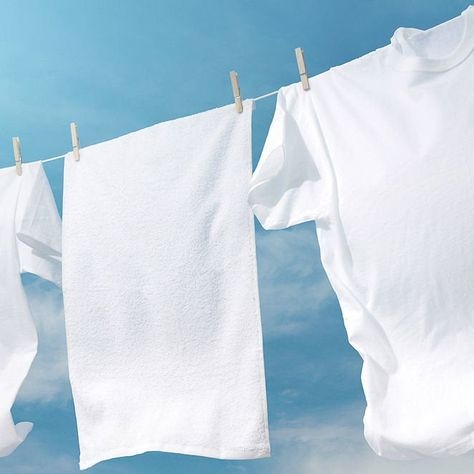
FAQS
Should I wash towels with clothes or sheets?
Yes, you can wash towels with clothes or sheets. It’s okay to wash towels with any other clothing item because of the time, effort, and money benefits. You can get it all done in a single go.
Just remember to be careful about the weight, colors, water temperature, and detergent to maintain the quality. We’ve discussed how in detail above. But if you don’t care about the laundry, just dump it in the machine and wash it!
Should I wash towels and socks together?
Yes, you can wash towels and socks together. Anything made from cotton (t-shirts, socks, sheets, sweatshirts, etc) is washable with towels. Just take care of the washing guidelines discussed above.
Also, it’ll be best if you put the socks in a mesh bag.
What should you not wash together?
It’s recommended to separate the laundry based on weight and color. You should also wash the kitchen, car, and pet towels separately. Only wash bath towels with clothes.
Which cycle should you wash towels on?
You’ll find different cycle labels on different washing machines. As experts, we suggest choosing the normal/regular cycle. This will prevent the towels from stretching the light and delicate clothes.
If the machine has a sanitizing cycle, you can also use it to ensure no germs prevail after washing!
How many times should you use a towel before washing it?
Bath towels should be washed after 3 to 4-uses. So, if you shower daily, you’ll want to wash it two times a week. This is necessary to stop the bacteria from growing or causing diseases.
Another way is to let the towel completely air dry – preferably under sunlight – to avoid bacteria growth.
Last Words
All in all, washing towels and clothes together is convenient and time-efficient. You get a batch of freshly-washed clothes without having to spend much time and energy doing separate loads. For college students and working adults, this is a lifesaver!
But, if you want to ensure the clothes last longer, follow the 9 tips on washing clothes with towels listed above. Do you have any more tips to share? Let us know in the comments below!